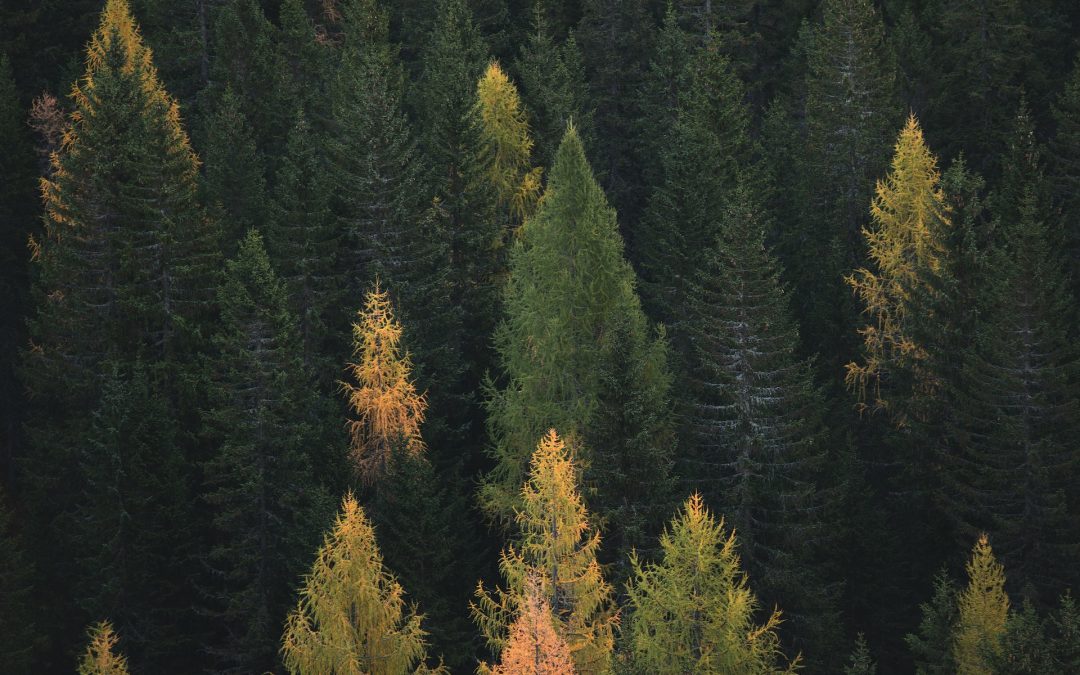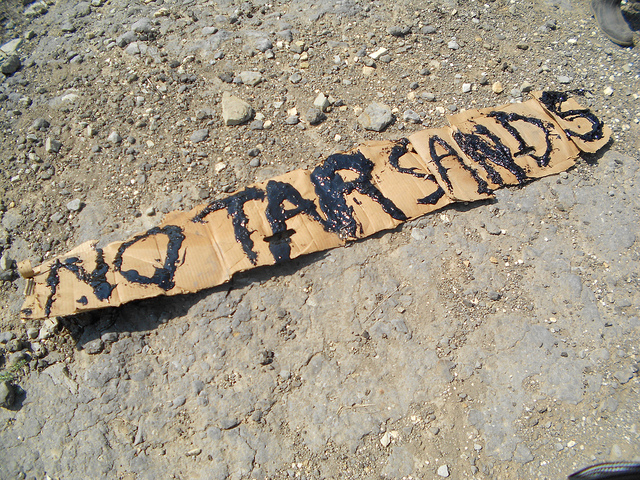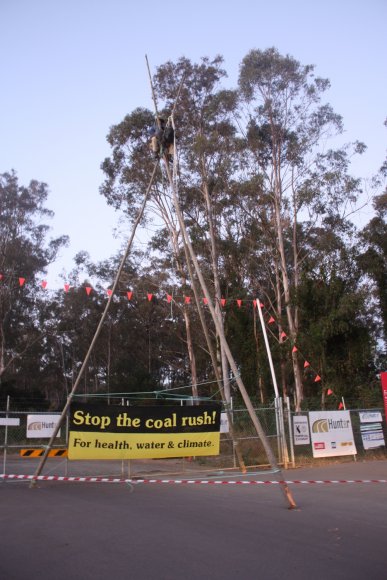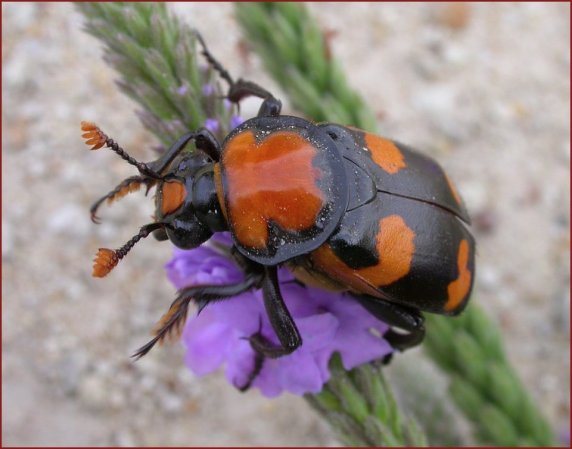
by Deep Green Resistance News Service | Sep 10, 2012 | ANALYSIS, Biodiversity & Habitat Destruction, Climate Change
By Mongabay
Already facing an onslaught of threats from logging and conversion for agriculture, forests worldwide are increasingly impacted by the effects of climate change, including drought, heightened fire risk, and disease, putting the ecological services they afford in jeopardy, warns a new paper published in the journal Nature Climate Change.
The study, authored by William Anderegg of Carnegie Institution for Science at Stanford University and Jeffrey Kane and Leander Anderegg of Northern Arizona University, reviews dozens of scientific papers dealing with the ecological impacts of climate change. They find widespread cases of forest die-off from drought and elevated temperatures, which can increase the incidence of fire and pest infestations like pine beetles. These effects have the potential to trigger transitions to other ecosystems, including scrubland and savanna. But the impacts vary from forest to forest and the authors say more research is needed to fully understand the effects of climate change on forest ecosystems.
However it is not only forests that are affected by climate change — they themselves impact climate. Forests store 45 percent of the carbon found in terrestrial ecosystems and sequester as much as 25 percent of annual carbon emissions from human activities, helping mitigate a key driver of climate change. Yet they also raise local temperate by absorbing sunlight. Clearing forests in polar regions has the paradoxical effect of increasing the reflectivity of Earth’s surface, reducing local temperatures. Yet clear-cutting of forests in the tropics accounts for 8-15 percent of anthropogenic greenhouse gas emissions.
The authors say that the research gaps make it difficult to forecast the economic and ecological impacts of climate change on forests, which cover cover some 42 million square kilometers or 30 percent of Earth’s land surface and underpin hundreds of billions to trillions of dollars a year in economic activity.
“The varied nature of the consequences of forest mortality means that we need a multidisciplinary approach going forward, including ecologists, biogeochemists, hydrologists, economists, social scientists, and climate scientists,” said William Anderegg in a statement. “A better understanding of forest die-off in response to climate change can inform forest management, business decisions, and policy.”
From Mongabay: “Climate change causing forest die-off globally”
Photo by Federico Bottos on Unsplash

by Deep Green Resistance News Service | Sep 8, 2012 | Lobbying, Mining & Drilling, Movement Building & Support
By Melanie Jae Martin / Waging Nonviolence
Last week, a new front opened in the struggle against tar sands mining in the U.S. If you didn’t know that tar sands mining is in the works on this side of the border in the first place, you’re not alone. Most people don’t realize that tar sands extraction, which has caused tremendous pollution and environmental degradation in Canada, has crossed the border to U.S. soil, where it has taken root in Utah.
Activists on both sides of the border have been working fervently to halt the spread of tar sands in Canada and the piping of tar sands oil from Alberta to Texas. Beginning with Tar Sands Action’s mass arrests outside the White House in August 2011, followed by the Indigenous Environmental Network’s protests at the climate talks in Durban that December, activists have made Canadian tar sands mining and the Keystone XL pipeline to the Gulf of Mexico a high-profile issue this past year.
Now, direct action campaigns like the Tar Sands Blockade in Texas are continuing the effort to stop construction of the southern leg of the pipeline by disrupting business as usual for the oil industry. The threat of tar sands mining in the U.S., however, complicates the struggle. It forces geographically divergent groups to either divide their efforts or find ways to unite across vast distances. That’s why groups like Utah Tar Sands Resistance and Before It Starts are forming a strategy that can join, as well as compliment, the tornado of opposition that has formed against the tar sands industry.
Before It Starts — co-founded by Ashley Anderson, who began Peaceful Uprising with Tim DeChristopher in 2009 — is focusing primarily on national outreach, while Utah Tar Sands Resistance is focusing on forging local and regional coalitions. In both groups, activists who have experience in nonviolent direct action are prepared to ramp up efforts when the time is right. Thus far, however, the struggle has mainly been waged in the courtroom.
The environmental group Living Rivers initiated a legal challenge in 2010 to halt the progress of what’s set to become the first commercial tar sands mine in the U.S. — a forested area in Eastern Utah called PR Spring, which the state has leased a portion of to the Canadian mining company U.S. Oil Sands. Living Rivers has contested the company’s permit to dump wastewater at the mine, but last week, the judge — an employee of the Utah Department of Environmental Quality — sided with U.S. Oil Sands, granting it the right to pour toxic wastewater into the remote wilderness of eastern Utah.
The case hinged on whether or not PR Spring contains groundwater. In the hearing back in May, U.S. Oil Sands argued that the land holds no groundwater, which means that polluting the land wouldn’t contaminate water systems. But according to engineering geologist Elliott Lips, who spoke as a witness for Living Rivers, the land holds numerous seeps and springs, which the toxic tailings would pollute before either continuing to flow into rivers or percolating downward into the Mesa Verde aquifer. Ultimately, the judge was satisfied knowing that the company had conducted its own tests and would have reported water if it had found any.
Raphael Cordray, co-founder of the Utah Tar Sands Resistance, explains that tar sands mining would be incredibly destructive in a number of ways, such as polluting water, lowering river levels and destroying diverse ecosystems. “There’s so much wild land in our state, and that’s something I’m proud of,” she said. “That’s our legacy. And it’s a treasure for the whole world. Some of these places they’re trying to mine are so unique that if more people realized they existed, they’d certainly be considered national parks.”
To catalyze mass resistance, the group plans to lead trips to the site. “Helping people experience the majesty of this land firsthand will show people how much is at stake, and move them to take a stronger stand,” said Utah Tar Sands Resistance co-founder Lionel Trepanier.
Together with activists from Peaceful Uprising and Living Rivers, Utah Tar Sands Resistance visited the PR Spring site two weeks ago, and members returned home ready to ramp up efforts to halt the mining. As a member of both groups, I went along on the trip, because I wanted to see firsthand what the land looked like and whether the mining company’s claims about the absence of groundwater were accurate.
As it turns out, they couldn’t be more false. Water has etched its presence into this land, leaving creek beds that may run low at times but never go away. And clearly, the area holds plenty of water to support the large herds of deer and elk, as well as the aspen, Douglas firs and pinyon pines that make up the dense forest covering much of the land.
This vibrant green scenery was juxtaposed by the two-acre strip mine just feet away from the forest’s edge. The difference between life and death could not have been more stark. Looking into the face of such destruction, I realized it’s no longer about saving the ecosystem, or saving our water — it’s about saving life on Earth. But that kind of effort isn’t possible without a broad movement behind it.
According to Lionel Trepanier, the groups working on this issue are looking to Texas’ Tar Sands Blockade as a model for building a broad coalition that includes “diverse groups of people like ranchers, hunters, the Indigenous community and climate justice activists.”
“I think we so often assume that someone won’t agree with us just because they seem different from us, when they could be our biggest ally,” said Cordray. “We’re committed to breaking down those barriers formed by fear of reaching out, and approaching people as human beings who need clean water and a healthy environment just as much as we do.”
Read more from Waging Nonviolence: http://wagingnonviolence.org/2012/09/opposition-mounts-as-first-tar-sands-mine-in-us-gets-a-green-light/
by Deep Green Resistance News Service | Sep 7, 2012 | Agriculture, Biodiversity & Habitat Destruction
By Agence France-Presse
A large palm oil plantation project in development in Cameroon since 2010 will put livelihoods and ecosystems in peril if allowed to continue, a US-based think-tank warned Wednesday.
“With the loss of livelihoods by thousands of Cameroonians on the line and critical and unique ecosystems in peril, this project must be stopped,” the Oakland Institute said in a report Wednesday.
Authoured in collaboration with Greenpeace International, the report said the project from SG Sustainable Oils Cameroon (SGSOC) was a case of massive deforestation disguised as a sustainable development project.
In 2009, Cameroon granted SGSOC, a subsidiary of US firm Herakles Farms, over 73,000 hectares (180,000 acres) of land in the country’s southwest to develop the plantation and refinery through a 99-year land lease.
But much of the project area is in a “biodiversity hotspot” that “serves as a vital corridor between five different protected areas,” the institute said.
It added that many locals fear the plantation would “restrict their access to lands held by their ancestors for generations” or that they would “lose land for farming as well as access to critical natural resources and forest products.”
In April, “11 of the world’s top scientists issued an open letter urging the Cameroonian government to stop the project that they say will threaten some of Africa’s most important protected areas,” the think-tank said.
But Bruce Wrobel, CEO of Herakles Farms, told the institute that “our project, should it proceed, will be a big project with big impacts — environmentally and socially.”
“I couldn’t be more convinced that this will be an amazingly positive story for the people within our impact area,” he was quoted saying in the report.
From Agence France-Presse:

by Deep Green Resistance News Service | Sep 5, 2012 | Mining & Drilling, Obstruction & Occupation
By Rising Tide Australia
Activists entered the Hunter 8 Alliance compound at Rutherford before dawn today, erecting a wooden tripod to block access to the site, which is part of a Federally funded project to increase coal haulage capacity in the Hunter Valley. Activist Ned Haughton scaled the 10 metre high structure, where he remained for the next five and a half hours. Haughton has now been arrested, and will be charged with obstruction.
Steve Phillips, spokesperson for protest organisers Rising Tide, said: “This railway construction project is designed purely for the benefit of coal corporations, yet it is being paid for with taxpayers money.”
“Why are taxpayers dollars being handed over to rich mining corporations, in order to prop up a polluting industry that is destroying human health and the environment?”
“There is a coal rush under way in NSW, and public health, waterways, ecosystems, and the global climate are under assault. Massive coal mine projects, coal haulage projects, and coal port projects are in the pipeline. If all these projects go ahead, the consequences will be devastating.”
Today’s protest follows two consecutive days of community direct action against the Boggabri mine in the Gunnedah Basin – the coal industry’s “new frontier”. A major expansion of the Boggabri coal mine was approved by the NSW Government in July despite huge ecological impacts and overwhelming community opposition.
“We call on State and Federal Governments to abandon their infatuation with mining companies, and their addiction to fossil fuels. It’s time to take a stand and stop this coal rush before it’s too late.”
Key facts.
- The Maitland to Minimbah Third Track project is being constructed by Hunter 8 Alliance, which is a consortium of engineering company GHD, construction company John Holland, and the Federally owned Australian Rail Track Corporation.
- The objective of the project is to lift coal haulage capacity on the Hunter rail corridor to 200 million tonnes per annum. It includes construction of 23km of new rail track, and reconditioning of 9km of existing track.
- The Federal Government granted $114 million, through the ARTC, to the project.
From Rising Tide Australia

by Deep Green Resistance News Service | Sep 1, 2012 | Biodiversity & Habitat Destruction
By Zoological Society of London
One fifth of the world’s invertebrates may be heading for extinction according to ‘Spineless’, a report published today (Friday 31st) by the Zoological Society of London (ZSL), in conjunction with IUCN and the IUCN Species Survival Commission.
Digging up earthworms, chasing butterflies and collecting clam shells could become a thing of the past if enough isn’t done to protect invertebrates. And if they disappear, humans could soon follow. These critters form the basis of many of the essential benefits that nature provides; earthworms recycle waste nutrients, coral reefs support a myriad of life forms and bees help pollinate crops.
More than 12,000 invertebrates from the IUCN Red List of Threatened Species were reviewed by conservation scientists who discovered freshwater species to be under the highest risk of extinction, followed closely by terrestrial and marine invertebrates. The findings from this initial group of global, regional and national assessments provide important insight into the overall status of invertebrates. Together they indicate that the threat status of invertebrates is likely very similar to that of vertebrates and plants.
Invertebrates are at risk from a variety of threats. Molluscs such as thick shelled river mussels suffer from pollution from agricultural sources and dam construction, which affects the quality of the water they live in. Crayfish such as the noble crayfish, are at risk from the impact of invasive species and diseases. What starts off as a local decline could lead to a global extinction, and recognising the growing pressures on invertebrates is critical to informing more effective conservation.
Dr. Ben Collen, head of the Indicators and Assessments unit at ZSL says: “Invertebrates constitute almost 80 per cent of the world’s species, and a staggering one in five species could be at risk of extinction. While the cost of saving them will be expensive, the cost of ignorance to their plight appears to be even greater”.
The highest risk of extinction tends to be associated with species that are less mobile and are only found in small geographical areas. For example, vertebrate amphibians and invertebrate freshwater molluscs both face high levels of threat – around one third of species. In contrast, invertebrate species which are more mobile like dragonflies and butterflies face a similar threat to that of birds, and around one tenth of species are at risk.
ZSL’s Director of Conservation, Professor Jonathan Baillie added: “We knew that roughly one fifth of vertebrates and plants were threatened with extinction, but it was not clear if this was representative of the small spineless creatures that make up the majority of life on the planet. The initial findings in this report indicate that 20% of all species may be threatened. This is particularly concerning as we are dependent on these spineless creatures for our very survival.”
Read more from Zoological Society of London: http://www.zsl.org/conservation/news/invertebrates-on-the-brink,993,NS.html
by Deep Green Resistance News Service | Aug 31, 2012 | Indigenous Autonomy, Mining & Drilling, Obstruction & Occupation
By Skwekwekwelt Solidarity
Concerned members of the Tahltan Nation have set up a road block on Highway #37, 80 km south of Dease Lake, BC at the Tatogga Lake Resort. The Red Chris Mine is within the territory of the Tahltan Nation who have occupied territory since time immemorial. The specific area where the Red Chris Mine is being constructed is home to many species of animals including Stone Sheep, Mountain Goat, Moose and Caribou. The Tahltans depend upon these animals for subsistence and believe that the mine will destroy the animal’s habitat and calving grounds that is sacred to the Tahltans.
The Tahltan Leadership has spoken out strongly against the mine and criticized the BC mine permitting process that is viewed as corrupt. The BC Liberal Government has given free rein to mining companies leaving the environment vulnerable to contamination and disruption. Tahltans have serious concerns with the design of the tailings ponds and the potential for leakage and wide scale environmental disasters that will result should tailings leak into the environment. At the Tahltan Central Council Annual General Assembly held in July 2012 a resolution was passed to develop a No Red Chris Campaign to oppose the Red Chris Mining Project.
Two Tahltan women Kukdookaa and Adanza’a will be at the blockade with other elders and concerned Tahltans handing out information and educating those travelling along Highway #37 about the critical issues facing the Tahltans and their homelands.
Adanza’a is a 73 year old great grandmother on the blockade to protect her homeland for her grandchildren so that they can enjoy what we have today without the destruction mining will bring. She said that, “Our ancestors fought and died for our homeland to protect our way of life for us and the least we can do is fight for our rights and the rights of generations to come.”
Kukdookaa is also a grandmother who believes in fighting for the rights of the Tahltan Nation and will go to any length to protect the Tahltan people, wildlife, fish, and the environment. “It is irresponsible of the BC Government to provide permits while serious issues remain unresolved with the people who occupy the area.” Wild game outfitters, resort owners and other business people also have concerns with the location of the road and the disruption to wildlife and the pristine wilderness.
From Intercontinental Cry: http://intercontinentalcry.org/tahltans-set-up-roadblock-to-oppose-red-chris-mine/




